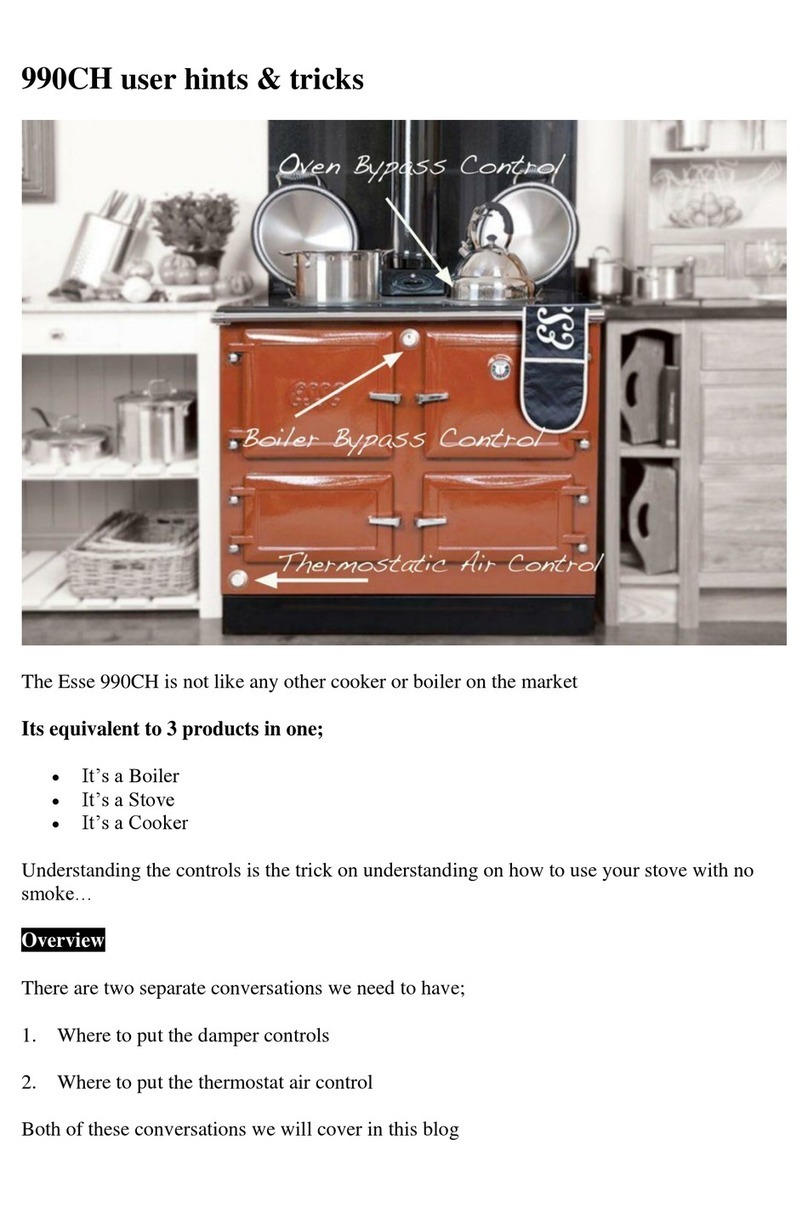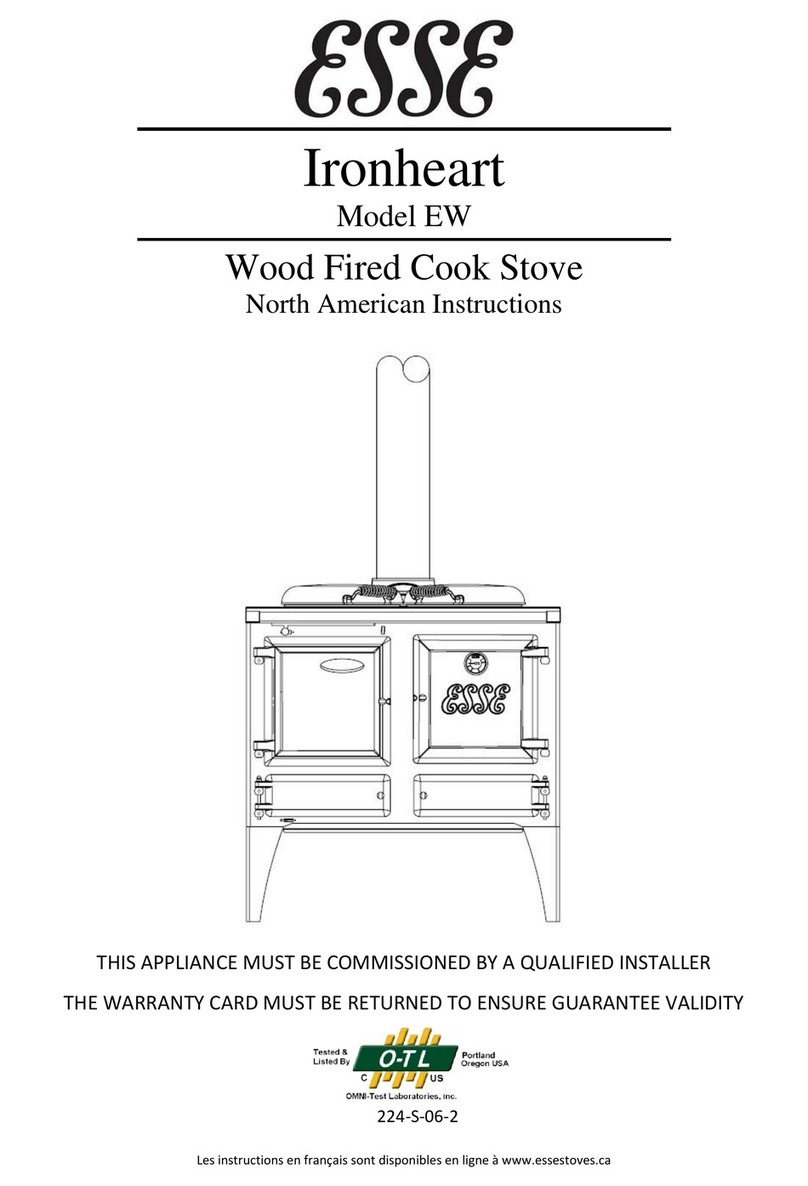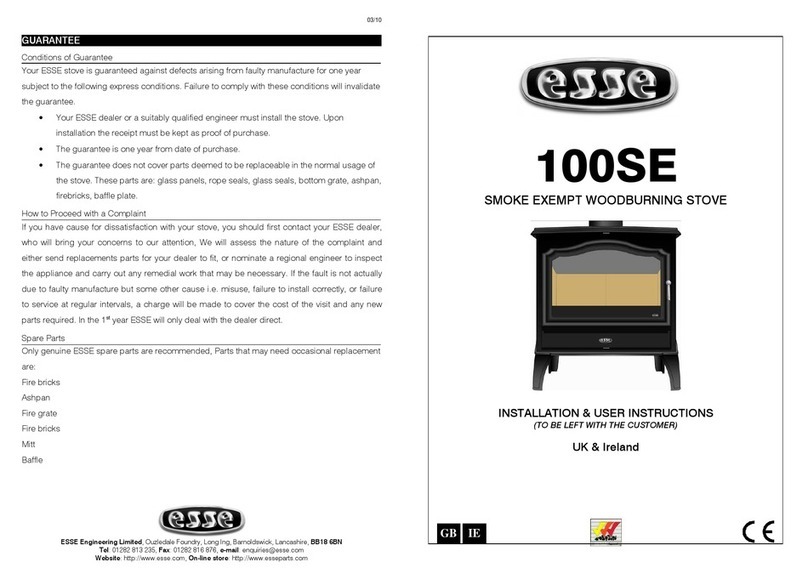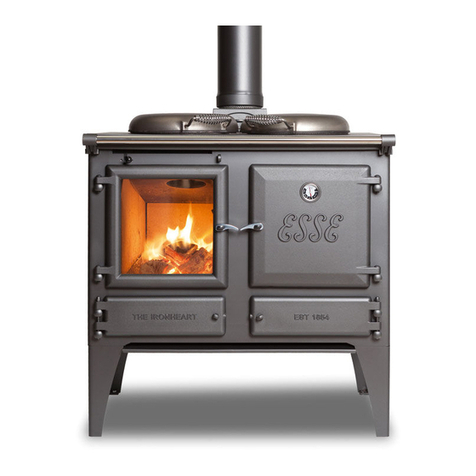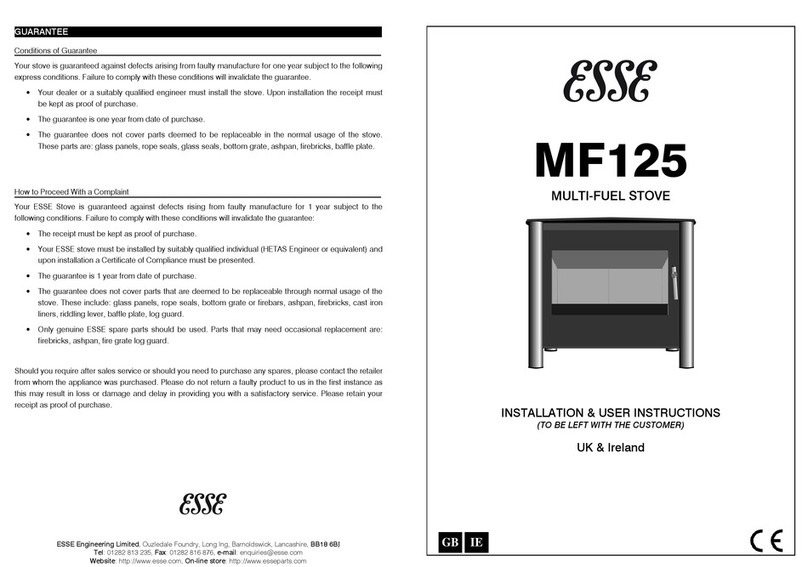
2
CONTENTS
1. WELCOME TO YOUR ESSE........................................................................................................4
2. QUICK START GUIDE................................................................................................................5
3. OPERATING INSTRUCTIONS.....................................................................................................6
CO ALARM.....................................................................................................................................6
VENTILATION ................................................................................................................................6
FUEL..............................................................................................................................................6
WOOD LOGS .................................................................................................................................6
COMBUSTION AIR, AIRWASH & CONVECTION AIR........................................................................7
PARTICULATE REBURN™ TECHNOLOGY........................................................................................9
LIGHTING YOUR ESSE STOVE.......................................................................................................13
REFUELLING................................................................................................................................ 14
REDUCED BURNING....................................................................................................................14
THE FIRE GRATE AND RIDDLING..................................................................................................15
ASHPAN ......................................................................................................................................15
CLEANING & MAINTENANCE.......................................................................................................16
CHIMNEY SWEEPING...................................................................................................................16
SAFE SHUTDOWN .......................................................................................................................16
SEASONAL USE............................................................................................................................16
WARRANTY.................................................................................................................................17
TROUBLESHOOTING....................................................................................................................17
PLANNING THE INSTALLATION....................................................................................................19
4. INSTALLATION INSTRUCTIONS............................................................................................... 19
VENTILATION ..............................................................................................................................19
PRODUCT SPECIFICATION –100 SERIES......................................................................................20
CO ALARM...................................................................................................................................20
UNPACKING THE APPLIANCE ...................................................................................................... 22
TOP OR REAR FLUE CONNECTION...............................................................................................22
CHIMNEY & FLUE ........................................................................................................................23
HEARTH.......................................................................................................................................23
CLEARANCE DISTANCES (COMBUSTIBLES & NON-COMBUSTIBLES)............................................24
FLUE DRAFT ................................................................................................................................24


